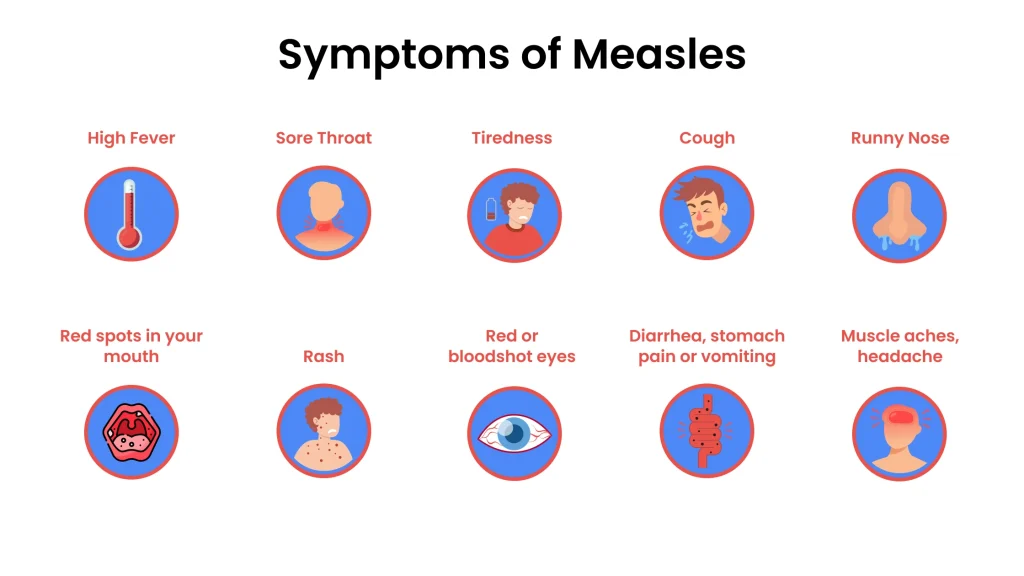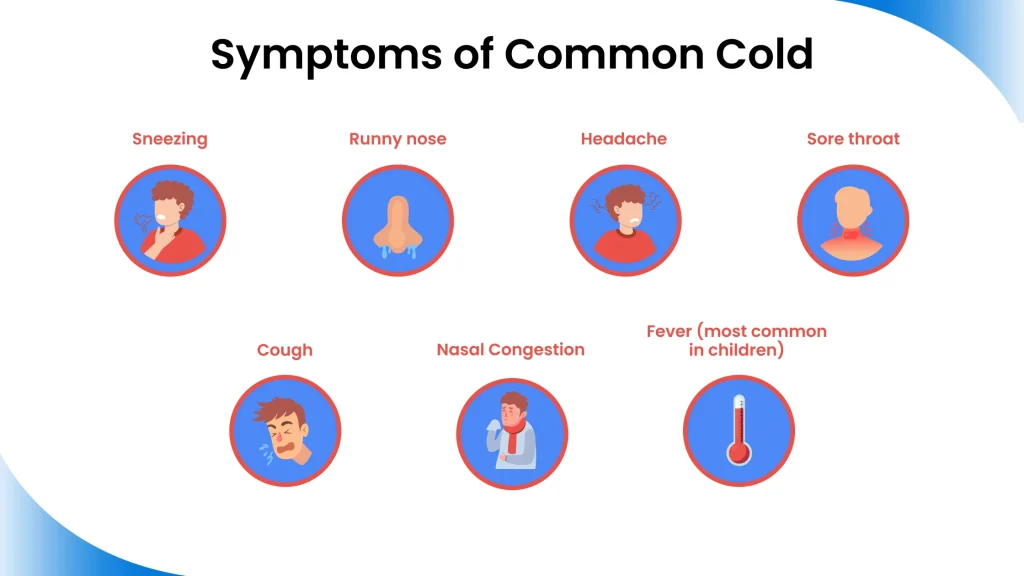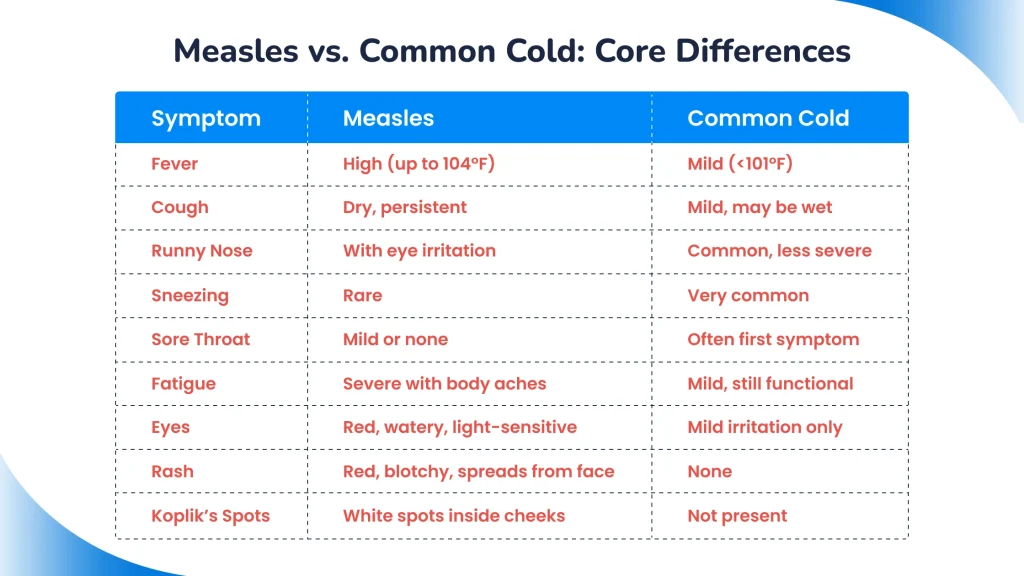Cough, runny nose, fatigue, and a low-grade fever are symptoms we often associate with the common cold. But what if they signal something far more serious? In the ongoing debate of measles vs. common cold, recognizing the early signs of measles, especially amid rising 2025 outbreaks, is more critical than ever. Measles, a highly contagious viral disease, can mimic cold symptoms before escalating into serious complications.
This blog breaks down the subtle but crucial differences between measles and the common cold, and the life-saving role of vaccination.
We’ll also explore why community immunity is at risk, what steps to take if exposure is suspected, and how to protect yourself, your family, and your community, especially vulnerable children not yet old enough to be vaccinated.
By understanding the nuances between these two common (yet vastly different) illnesses, you can help stop the spread before it starts and ensure timely care when it matters most.
Measles and the Common Cold: A Brief Overview
Measles (rubeola) is a highly contagious viral illness characterized by fever, rash, and persistent cough. It spreads through airborne droplets released when an infected person coughs or sneezes. It can remain infectious for up to four days before and after the rash appears, making early detection and isolation critically important. While widespread vaccination has largely controlled the disease in the United States, outbreaks still occur, particularly in communities with low immunization rates, underscoring the ongoing need for vigilance and public health efforts.
Conversely, the common cold is caused by several mild viruses, most often rhinoviruses. While it may make you feel miserable, it’s self-limiting and rarely leads to complications.
While measles can be serious, its most severe outcomes are largely preventable with timely, proactive care and vaccination. However, certain groups remain especially vulnerable to complications, including:
- Unvaccinated children under the age of 5
- Adults over the age of 20
- Pregnant women
- Individuals with weakened immune systems
For these high-risk populations, even a single case of measles can lead to serious health consequences, making prevention and early intervention all the more essential.
If you’re unvaccinated or overdue for a check-up, now is the time to schedule your Annual Physical Health Examination at Specialty Primary Care & Wellness. It’s a proactive step toward protecting your health and doing your part to safeguard the well-being of your community.
In next section, we’ll compare the symptoms of measles vs. common cold to help you identify warning signs and take action early.
Measles vs. Common Cold: Recognizing Symptoms
At first glance, measles and the common cold can seem similar, especially in the early stages when symptoms like a runny nose and cough appear. However, measles follows a more distinct and severe pattern, with hallmark signs that set it apart.
Measles: A Step-by-Step Progression
Measles symptoms typically develop in stages over 7–14 days after exposure. They don’t appear all at once, making early detection challenging.

Stage 1: Early Symptoms (Days 1–3)
- High fever (often over 104°F / 40°C)
- Barky cough
- Runny nose
- Red or bloodshot eyes
- Tiredness and general malaise
- Sore throat
- Muscle pain
- Headache
Stage 2: Koplik’s Spots (Days 3–5)
- Tiny red spots with white centers inside the mouth—a tell-tale sign of measles
- These spots fade as the next stage begins
Stage 3: Rash Phase (Day 4 onward)
- Blotchy red rash that starts at the hairline or face and spreads downward
- May be accompanied by a second spike in fever
- Digestive symptoms may also appear: diarrhea, stomach pain, vomiting
The rash typically lasts 5–7 days, gradually darkens, then flakes off as the infection resolves.
Now, a variety of viruses cause the common cold, which usually starts 1–3 days after exposure. It is far less severe and usually resolves without medical intervention.
Common Cold Symptoms

- Runny or stuffy nose
- Sore or scratchy throat
- Cough
- Sneezing
- Low-grade fever (more common in children)
- Slight body aches or a mild headache
- Generally feeling unwell (malaise)
You may also notice that the mucus from your nose changes from clear to yellow or green. This is normal and doesn’t necessarily indicate a bacterial infection.
How to Self-Diagnose: Red Flags to Watch For
If you’re feeling unwell and unsure whether it’s just a cold or something more serious, look for these measles-specific red flags:
- Did your fever escalate rapidly and reach over 103–104°F?
- Are your eyes unusually sensitive to light or producing excessive tears?
- Can you see tiny white spots inside your cheeks or near the molars (Koplik’s spots)?
- Has a rash that began near your hairline or face spread downward?
These signs, especially when appearing together, strongly suggest something beyond a common cold—and may point to measles.
Remember, severe outcomes can be avoided with timely action and care. Don’t be late—stay informed, protected, and proactive.
Let’s quickly recall what symptoms differentiate measles from the common cold. The following table provides a reference.
Measles vs. Common Cold: Core Differences

Given the potential severity of measles and its ease of spread, accurately differentiating it from a common cold is not just a matter of individual health, but also a key factor in protecting the wider community.
Why Community Immunity Is at Risk?
Measles is making a comeback, and declining vaccination rates are to blame. Without enough people vaccinated, the virus spreads easily, putting babies, pregnant individuals, and those with weak immune systems at risk. Staying current on vaccines protects not just you, but your entire community.
The stakes in the measles vs. common cold conversation go beyond symptoms. Without strong community immunity, misdiagnosing measles can lead to preventable outbreaks. Want to understand how vaccines stop epidemics before they start? 👉 Read: Community Immunity: Why Your Vaccine Matters More Than Ever
Complications: Why Spotting the Difference Matters
While the common cold is usually mild and self-limiting, measles can lead to serious, even life-threatening complications, especially in children and vulnerable individuals. Misdiagnosing measles as a simple cold delays proper treatment and increases the risk of spreading the infection to others in the community.
Here are some of the most common and severe complications of measles:
- Ear infections (affecting about 1 in 10 cases), which can lead to hearing issues
- Severe diarrhea, which may cause dehydration in children
- Pneumonia is the leading cause of measles-related mortality in young children
- Encephalitis (inflammation of the brain)
In rare cases, measles can be fatal, as seen in recent outbreaks involving unvaccinated children. These risks are why it’s crucial to distinguish measles from the common cold early and seek medical guidance when symptoms escalate.
When to Seek Medical Attention
You should seek immediate medical care if you or your child experiences any of the following:
- High fever (above 103°F) lasting more than three days
- Severe fatigue or trouble breathing
- Red, watery eyes with light sensitivity
- A spreading rash, especially when paired with white spots inside the cheeks (Koplik’s spots)
- Known exposure to measles and lack of MMR vaccination
Timely diagnosis can help contain the spread and ensure supportive care before complications arise.
Prevention Starts with Vaccination
The MMR (Measles, Mumps, Rubella) vaccine is the most effective way to prevent measles.
According to the CDC:
The vaccine is safe, effective, and essential—not just for your health but also for the safety of babies, pregnant individuals, and those who cannot receive vaccines for medical reasons.
Recognizing measles’s high fever, dry cough, and distinctive rash early is vital to stop its spread and protect community health. For timely diagnosis and care, consult your provider or visit Specialty Primary Care & Wellness.
Stay Ahead of Health Issues with Specialty Primary Care & Wellness

When symptoms strike, a seasonal cold or something more serious like measles, having a trusted primary care provider makes all the difference. At Specialty Primary Care & Wellness, we focus on proactive, year-round care to catch concerns early and keep your whole body in balance.
Our comprehensive services include:
- Annual Physical & GYN Exams
- Women’s & Men’s Health
- Allergy & Immunization Management
- Thyroid & Hypertension Support
- Anxiety, Depression & Sexual Health Care
- Weight Loss & Preventive Screenings
📅 Book your appointment today and take the first step toward complete wellness.



